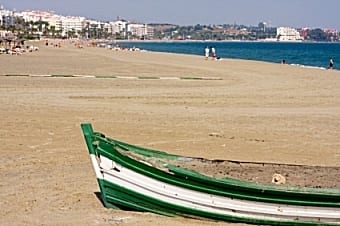DIFFICULT to believe, I know, but we tend to think of plants and herbs as a back cloth to our busy lives.
In reality plants provide the very air we breathe to survive on Earth by the way they absorb carbon dioxide and exhale oxygen.
Herbs not only provide us with food and medicine but have been currency for trading for centuries.
There was a time when one chest of sage was worth three chests of tea.
It was tea that almost destroyed Chinese culture, helped bring about America’s Bill of Independence and enslaved thousands of workers in southeast Asia – pretty influential for a small evergreen tree named after the 17th century Jesuit botanist Camellius.
But modern day medicine was changed forever with the discovery of opium.
The opium poppy – papaver somniferum – is as old as medicine itself and is unequalled as a painkiller.
It is still the first choice drug for relieving severe pain and cannot be synthesised, hence the continuing need to grow opium poppies.
The poisonous properties of autumn crocus – colchium autumnale – have been known since Egyptian times and used as a cure for gout and as a poison.
More recently, research in the UK has identified autumn crocus as a potential treatment for cancer.
The first anti-malarial drug, quinine, discovered in the mid-17th century from the bark of the chinchona tree, has saved countless lives in the tropics.
It propped up the British Empire, by enabling British explorer’s to conquer many tropical regions, where previously they had succumbed to the debilitating effects of malaria.
Finally, coca leaves – erthroxylum coca – used since AD500 by Peruvian tribes, with coca first used as an anaesthetic in 1884 in a cataract operation.
Coca wine became popular during the 19th century when a man named John Pemberton produced the ‘intellectual beverage and temperance drink’ later known as Coca-Cola!
Although only using decocainised extracts since the sale of cocaine was banned in 1902, the devastating impact of coca leaves can still be seen on many streets around the world today.
Contact sue@selfsufficiency4u.com.








I can’t believe the number of inaccuracies and untruths in this article.
Autumn crocus – why not mention saffron.
Coca – was used all over the Inca empire, not just in Peru and was used way before AD500. It was used not only by the Inca nobility but by the relay runners who carried messages all over the empire.
Coca-Cola was a liquid stimulant made from extracts from the coca leaf and from cola nitida an African stimulant and was very profitable because it was popular with those out on the town – a non pharma form of ‘speed’. This formulae was still being used until after WW11.
As to the statement about the devastating impact of coca leaves – the coca leaf contains 13 alkaloids of which cocaine is only one, why did’nt you mention this, did you even know?
The coca leaf and there are two types has wonderful medicinal properties – you really need to read – Mama Coca, though big pharma would prefer you did’nt. These properties have been well known by the medical profession for decades but again big pharma has greased the palms of politicians to stop people using the coca leaf.
Why not email President Morales of Bolivia he used to be a coca grower and he will put you straight.
Cocaine was freely available to the elites who have continued to use it to this day.
Why no mention of commercial hemp? Surely the most useful plant on the planet?
In some Neolithic graves in the Netherlands and Scotland the body rested on a bed of flowers of meadowsweet. This was used as a painkiller. In the 19th century headache powder was made from the flowers. Also found in Neolithic tombs was pollen from Cannabis Sativa plants. In 17th century France and Holland existed immense hemp plantations, from hemp was made the extensive lengths of rope and sails needed for sailing ships.
Assuming this isn’t one in a series entitled ‘Herbs that changed the world’not only does it omit to mention the most valuable herb in the history of man – cannabis sativa (hemp)what information it does contain is ill-informed. To say that the coca leaves have had a devastating impact around the world is utter tosh. Coca leaves are a staple in S America they even make sweets from them. Cocaine is, I think, what you are referring to and, if you look at the consumption figures for this one coca derivitive in London’s Square Mile I think you will find that is a greater source of devastation around the world. I like the fact that you are promoting the usefulness of herbs but please do some research before you write and don’t resort to the sort of silly Daily Mail hyperbole which taints this article.
No mention of hemp.